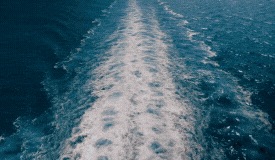PHILIPSBURG (DCOMM):--- National Disaster Coordinator/Fire Chief Clive Richardson said on Wednesday, that Tuesday, November 5 marked World Tsunami Awareness Day.
In the last century, Tsunamis according to United Nations (UN) figures, have claimed more than a quarter of a million lives, killing on average, around 4,600 per event, over the course of 58 recorded instances.
To mitigate disaster risks, the UNs Disaster Risk Reduction (UNDRR) put forth a 15-year framework outlining seven clear targets to achieve substantial reduction of disaster risk and losses in lives, known as the Sendai Framework, adopted in Sendai, Japan, in 2015.
In 2019, the Day promotes the Framework’s target to reduce disaster damage to critical infrastructure and disruption of basic services, including hospitals and schools.
Over 700 million people live in low-lying coastal areas and Small Island Developing States, are exposed to extreme sea-level events including tsunamis, according to the Intergovernmental Panel on Climate Change (IPCC).
Investing in resilient infrastructure, early warning systems, and education is critical to saving people and protecting their assets against tsunami risk in the future.
By the year 2030, an estimated 50 per cent of the world’s population will live in coastal areas exposed to flooding, storms and tsunamis.
The National Oceanic and Atmospheric Administration (NOAA) describes a tsunami as a series of ocean waves generated by sudden displacements in the sea floor, landslides, or volcanic activity.
“In the deep ocean, the tsunami wave may only be a few inches high. The tsunami wave may come gently ashore or may increase in height to become a fast-moving wall of turbulent water several meters high.
“Although a tsunami cannot be prevented, the impact of a tsunami can be mitigated through community preparedness, timely warnings, and effective response.”
For a destructive force such as a tsunami, the only way is to be prepared. The Caribbean Region is a seismic zone and there are exposed coastal areas.
Fire Chief/National Disaster Coordinator Richardson added that Sint Maarten at the moment is in the process of adding additional resources to its disaster management system.
Additional funds Richardson said would also go towards disaster-proofing critical infrastructure, adding that the rebuilding and reconstruction process should be based on the primary principle of ‘build to last’ and ‘resilience’.
While tsunamis cannot be prevented, the Office of Disaster Management (ODM) would like to offer a source of information – visit www.preventionweb.net/english/ - on things you can do before a tsunami that could save your life and the lives of your family and friends. Go to the ‘hazards’ tab and select ‘tsunami.’ Prevention web is a knowledge platform for disaster risk reduction.
When a tsunami warning is issued, ‘take action!’ Move to high ground; stay out of the water, away from beaches and waterways.
According to the NOAA, a natural tsunami warning may be your first, best or only warning that a tsunami is on its way. Natural tsunami warnings include strong or long earthquakes, a loud roar (like a train or an airplane) from the ocean, and unusual ocean behavior.
The ocean could look like a fast-rising flood or a wall of water. Or, it could drain away suddenly, showing the ocean floor, reefs and fish like a very low, low tide. If you experience any of these warnings, even just one, a tsunami could be coming.
Some additional preparations that you should have in place are: Make an emergency plan that includes a family communication plan and put together a portable disaster supplies kit that is easily accessible and contains basic items you and your family may need in any emergency.
Include your pets in all your preparedness efforts. Since you do not know where you will be when disaster strikes, prepare kits for work and your car, too. Meet with your family to discuss the plan and why you need to prepare for a disaster. Practice your plan and keep it up to date.
Be a role model. Share your knowledge and plans with friends and neighbors so they can prepare themselves and their loved ones.
The Sendai Framework for Disaster Risk Reduction 2015-2030 was adopted by the UN Member States on 18 March 2015 at the Third UN World Conference on Disaster Risk Reduction in Sendai City, Miyagi Prefecture, Japan.
The Framework aims to achieve the substantial reduction of disaster risk and losses in lives, livelihoods and health and in the economic, physical, social, cultural and environmental assets of persons, businesses, communities and countries over the next 15 years.












